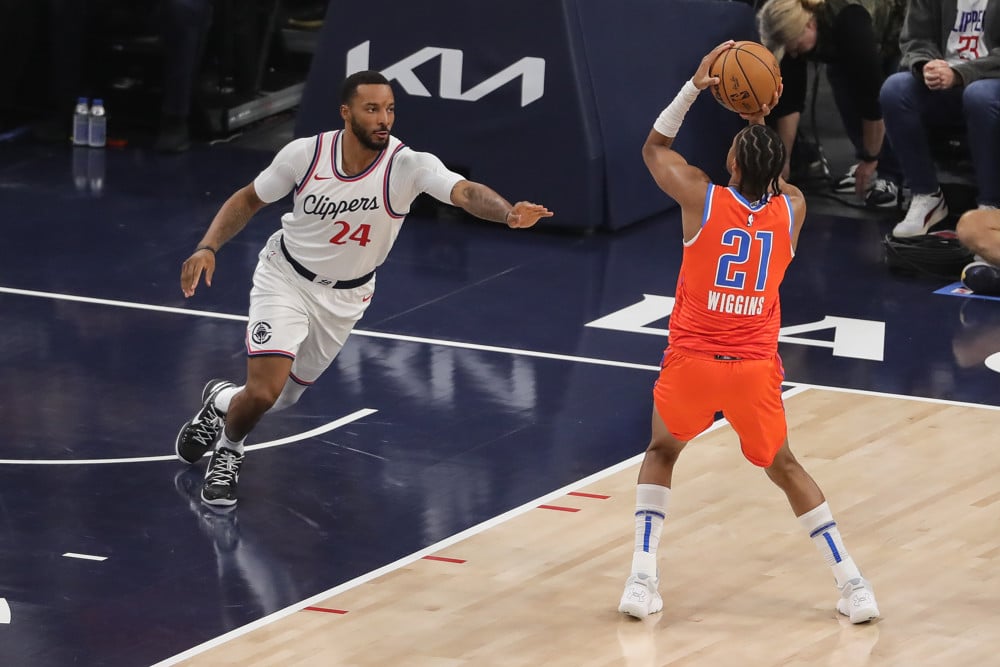Sports
Kirby Hocutt unsure on scholarship increases for Texas Tech football, other sports

Kirby Hocutt on Patrick Mahomes’ $5 million gift, Texas Tech NIL program
Three-time Super Bowl MVP Patrick Mahomes has pledged $5 million to Texas Tech football projects and plans to sponsor six Tech athletes in NIL deals
Texas Tech athletics director Kirby Hocutt and deputy AD Jonathan Botros have said this summer that the Texas Tech athletics department will be full participants in revenue sharing with its athletes, part of the landmark change on the college-sports horizon for the fall of 2025.
Hocutt is less certain to what extent Tech will increase its scholarship count, one of the key components allowed in the proposed settlement in the House v. NCAA case. Even in football, where programs soon might be able to boost scholarships from 85 to 105, it’s not a sure thing Tech will go there, at least not to the new limit.
“The answer is I don’t know yet,” Hocutt told the Avalanche-Journal in mid-August when asked specifically about football. “We’re talking about that and (funding 105) could definitely be a scenario.”
He said it’s not, however, a simple call, especially with Tech planning to do whatever it takes to commit the maximum amount of revenue sharing allowed to its athletes. Revenue sharing at the top end is expected to start at a little more than $21 million a year beginning next year. To put that into context, the Tech athletics operating budget for the school year that started last week is between $128 million and $129 million.
Related: How Texas Tech would handle the changes proposed by NCAA president Charlie Baker
Related: Brett Yormark, Linda Livingstone discuss challenge of college sports’ new landscape
Tech athletics annually budgets expenses to equal projected revenues, so $21 million will require developing new forms of revenue and-or belt-tightening.
“There are other consequences and things that we need to think through,” Hocutt said, “before we give our coaches green lights to grow their roster and grow their scholarship budgets. It’s got to be a comprehensive plan, from revenue share to growth of scholarships and continued compliance with certain regulations.”
Any new spending on scholarships up to $2.5 million must be deducted from the revenue-sharing amount. So does spending on Alston awards, the education-related benefits for which Tech budgets about $1.7 million a year.
Multiple parties have filed legal opposition to the settlement proposal, and it still must be approved by U.S. District Judge Claudia Wilken.
The settlement proposal was filed to Wilken in late July. Yahoo Sports subsequently reported that, based on its conversations with power-conference administrators, many programs were planning to add $3 million to $7 million in annual scholarship expenditures.
Title IX considerations make Kirby Hocutt hesitant to immediately make scholarship decisions
Hocutt is taking a more guarded approach.
“Sitting here today, we have a lot more questions than we have answers for,” he told the A-J. “Our coaches are wanting answers, but we’ve got to be very careful as we move forward and very disciplined with our thought process, because there are Title IX stipulations that we’ve got to continue to be mindful of. We cannot just automatically grow our scholarship support for our men’s sports and think we can’t do the same for our women’s sports. We’ve also got to be aware of just total investment.”
Title IX is the federal law that requires schools to provide opportunities for women and men proportional to each school’s enrollment.
The NCAA and the power conferences voted in late May to settle three antitrust cases that involve nearly $2.8 billion in back damages, plus revenue sharing with athletes in the future. Hocutt said Tech’s hit stemming from the back-damages portion will be close to $1 million a year less in the annual Big 12 revenue distribution.
If the settlement proposal gets approved, the NCAA’s longstanding scholarship limits will be eliminated in all sports and replaced by caps on roster sizes. Schools will be allowed but not obligated to offer scholarships to every athlete on a roster.
More: Texas Tech football season starts Aug. 31. What’s the status of agreement with adidas?
More: Patrick Mahomes wants Texas Tech, adidas to make an impact on ‘the entire world’
All scholarships, according to the proposal, will become equivalencies, so schools may offer a full scholarship or a lesser amount.
Many sports that generate little revenue have long operated with equivalency scholarships. Baseball, for example, spreads 11.7 scholarships’ worth of financial aid over a roster more than double that number.
Under the settlement proposal, the number of scholarships would go from 85 in football up to a new roster limit of 105; from 11.7 in baseball to a new roster limit of 34; and from 13 to 15 in men’s basketball.
The numbers dramatically increase in some other sports Tech sponsors such as women’s soccer (from 14 scholarships to a roster limit of 28 that can all be placed on scholarship); softball (12 to 25); women’s volleyball (12 to 18); men’s and women’s track and field (12.6 and 18, respectively, to 45 in each); and men’s and women’s cross country (five and six, respectively, to 17 in each).
In other sports Tech sponsors, men’s and women’s golf would go from 4.5 and six scholarships, respectively, to a roster cap of nine each, and men’s and women’s tennis would go from 4.5 and eight scholarships, respectively, to a roster cap of 10 each.
Accommodating walk-ons, minimum-sport requirement still to be determined
Hocutt indicated there’s too much still to be decided before committing to any increase in a specific sport.
“Nobody knows yet how Title IX is going to be interpreted when it comes to revenue share,” Hocutt said. “Does revenue share fit in the financial-aid bucket, which Title IX talks specifically about? My personal opinion is it doesn’t, but at some point in time, that’s going to have to be (resolved).
“Unfortunately, I think litigation is going to be required to provide some clarity, or Congress is going to have to make a decision or Judge Wilken is going to have to make an opinion as to how Title IX touches the revenue-share bucket, if it does.
“So it gets very complex, more than just saying, ‘Yes, we’re going to grow this sport’s scholarships from X to Y.’ Unfortunately, it’s just not that simple for us.”
Major-college football teams have operated since the early 1990s with 85 scholarships, but rosters of more than 100 that included non-scholarship players. When it became apparent that the 85-scholarship limit would be eliminated and replaced by a 105-player roster, potentially all on scholarship at power-conference programs, many coaches raised the unwelcome specter of walk-on programs being eliminated.
That may be the case in some places and not in others under a scenario Hocutt outlined.
“You could give a full scholarship, plus whatever revenue-share percentage when we get to it,” Hocutt said. “Or you could give your 86th football player on your roster no scholarship, but we’re going to give you a revenue share of $30,000 and that should cover your tuition, fees, books, board at Texas Tech, but you’re going to have to pay your own scholarship bill.
“That’s why we’ve got to be careful, right? Because there’s parameters around scholarship and awards that you provide from a Title IX perspective. That’s why it may be more advantageous to give revenue share rather than an academic scholarship.”
Tech currently sponsors 17 sports teams, one more than the minimum to be part of Division I. That’s another looming matter.
“The 16-sport requirement is still an NCAA bylaw,” Hocutt said. “However, in the House settlement, there is no requirement as far as minimum-sport sponsorship. So you have this House settlement over here that’s driving so much of the current planning and conversations on our campuses and you have some of those things that conflict NCAA bylaw over here. At some point, those two worlds are going to have to cross.”
More: Texas Tech football offense breakdown: What’s known, what’s to be determined
More: Texas Tech football defense breakdown: What’s known, what’s to be determined
More: Texas Tech football special teams breakdown: What’s known, what’s to be determined








